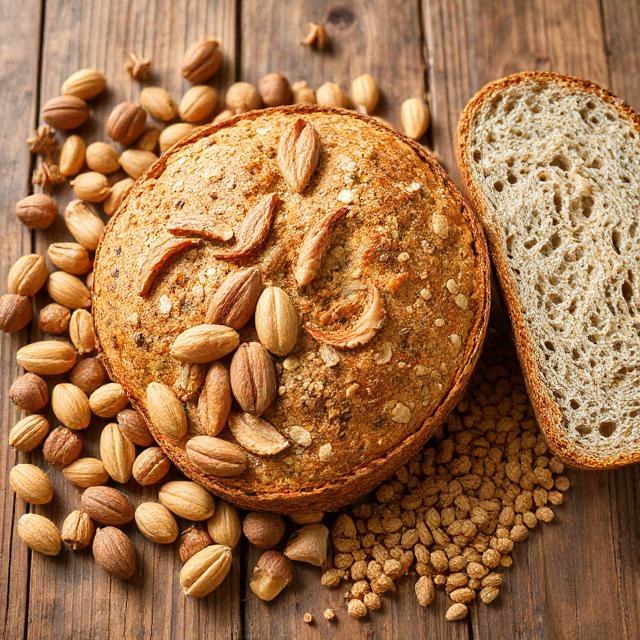
Imagine biting into a juicy burger, enjoying creamy cheese, or savoring succulent seafood—all produced without animals. This isn’t science fiction; it’s the exciting reality of alternative proteins, powered by fermentation technologies. Fermentation isn’t just for beer and bread anymore; it’s revolutionizing how we produce sustainable, nutritious, and delicious protein sources. Welcome to the bold new frontier of food science!
What Are Alternative Proteins?
Alternative proteins include any protein-rich food sourced not from animals but from plants, fungi, algae, or cultured cells. Among these, fermentation-derived proteins have emerged as the most promising category due to their scalability, nutritional profile, and minimal environmental impact.
Types of Fermentation in Alternative Protein Production
Fermentation, in simple terms, uses microorganisms to convert substances into valuable products. There are three primary fermentation methods currently revolutionizing the protein industry:
1. Traditional Fermentation
- Definition: Utilizing microbes to transform food ingredients into improved products.
- Examples: Tempeh (fermented soybeans), sauerkraut, kimchi, miso.
Traditional fermentation enhances digestibility, nutritional value, and flavor through microbial enzymatic activity, converting raw ingredients into enhanced forms of protein and essential vitamins.
2. Biomass Fermentation
- Definition: Cultivating microbial biomass itself as a food ingredient.
- Examples: Quorn’s mycoprotein (fungus-based), Meati Foods’ fungi-based steaks.
Biomass fermentation directly harnesses microbes to produce complete, nutritious proteins that mimic animal textures and nutritional profiles closely.
3. Precision Fermentation
- Definition: Using engineered microbes to produce specific functional ingredients, like proteins, enzymes, or fats.
- Examples: Perfect Day’s dairy proteins, Impossible Foods’ heme protein.
Precision fermentation involves genetically modifying organisms to produce exact proteins identical to animal-derived counterparts, making them indistinguishable in taste and functionality.
The Science Behind Fermentation in Alternative Proteins

Fermentation harnesses microorganisms—bacteria, yeasts, fungi, and algae—to convert substrates (like sugars) into proteins, lipids, and other essential nutrients.
- Genetic Engineering: Microbes are often engineered to efficiently produce high-quality proteins identical to animal-derived proteins.
- Bioreactors: Large-scale fermentation occurs in bioreactors, carefully controlled vessels maintaining optimal conditions (temperature, pH, oxygen levels) for microbial growth.
- Downstream Processing: After fermentation, proteins are purified, extracted, and formulated into food products through methods such as centrifugation, filtration, chromatography, and drying.
University Research and Innovations
Leading academic institutions worldwide are actively researching fermentation technologies:
- UC Berkeley: Researchers have developed methods for precise microbial genome editing, enhancing efficiency in protein production.
- Wageningen University: Known for pioneering food technology, Wageningen’s teams are optimizing bioreactor designs specifically for biomass fermentation.
- MIT: MIT’s Synthetic Biology Center actively works on designing metabolic pathways in microbes to boost the production of valuable proteins and bio-compounds.
Real-World Innovations and Trailblazers
Precision Fermentation: Animal-Free Dairy

- Perfect Day Foods: Produces dairy-identical whey and casein proteins without cows. Perfect Day ice creams and cheeses have gained popularity for their authentic taste and texture.
- Remilk: An Israeli startup creating dairy proteins via precision fermentation, targeting scalable production for global dairy replacement.
- Formo: A German startup engineering microorganisms to produce authentic European-style cheeses without cows.
Biomass Fermentation: Fungus-Based Meat
- Meati Foods: Uses mushroom mycelium to produce whole cuts of steak and chicken. Meati boasts nutrient-rich, fibrous textures closely mimicking meat.
- Nature’s Fynd: Harnesses Fusarium strain isolated from Yellowstone National Park to create high-protein, vegan breakfast patties and dairy alternatives.
- Atlast Food Co.: Produces mycelium-based bacon and other whole-cut meat alternatives.
Traditional Fermentation: Plant-Based Enhancements
- MycoTechnology: Improves plant protein taste and digestibility through traditional fungal fermentation, enhancing pea and soy proteins.
- Prime Roots: Uses koji fermentation to create plant-based meats with enhanced taste and texture.
Environmental and Health Benefits
Fermentation-based proteins significantly reduce environmental footprints:
- Land use: Up to 99% less land required compared to conventional animal farming.
- Water use: Dramatic water reduction—precision fermentation uses 90% less water than traditional dairy.
- Carbon footprint: Precision and biomass fermentation proteins produce significantly lower greenhouse gas emissions.
Health-wise, fermentation-derived proteins are cholesterol-free, antibiotic-free, and free from many allergens common in animal products.
Challenges and Opportunities

Despite tremendous potential, scaling fermentation-based alternative proteins faces several challenges:
- Scaling Up: Transitioning from lab-scale to industrial production requires significant infrastructure investment.
- Cost: Initially, fermentation-based proteins are pricier than animal products; achieving cost parity is crucial.
- Regulatory Hurdles: Novel foods require extensive safety testing and regulatory approval.
These challenges present opportunities for innovation, funding, and collaboration among startups, established food corporations, investors, and regulatory bodies.
The Investment Landscape
Investors are bullish on fermentation-based proteins:
- Venture Capital Interest: Firms like Temasek, Breakthrough Energy Ventures, and Andreessen Horowitz have invested heavily.
- Corporate Partnerships: Food giants like Nestlé, General Mills, and Danone partner with startups to scale fermentation technology rapidly.
Future Directions and Emerging Trends
The global alternative protein market, valued at $40 billion in 2023, is projected to exceed $250 billion by 2035. Emerging trends include:
- Hybrid Products: Combining plant-based proteins with fermentation-derived ingredients for superior textures and flavors.
- Personalized Nutrition: Customizable proteins tailored to individual dietary and nutritional needs, aided by advances in bioinformatics and synthetic biology.
- Space and Disaster Relief Applications: Shelf-stable, nutrient-dense fermented proteins ideal for remote locations or emergencies.
Conclusion
Fermentation is no longer just about brewing beer or making cheese; it’s brewing the future of food. Significant investments, rapid technological advancements, and consumer shifts towards sustainability position fermentation-derived proteins as transformative opportunities. Whether it’s your morning latte made with precision-fermented milk, lunch featuring biomass-fermented chicken, or dinner of traditionally fermented plant proteins, the future of food is already fermenting—rich with potential, sustainability, and flavor. The fermentation revolution is underway, promising a healthier planet and healthier people.
clearer formatting to roughly double its length. Let me know if you need further refinements or more additions!
